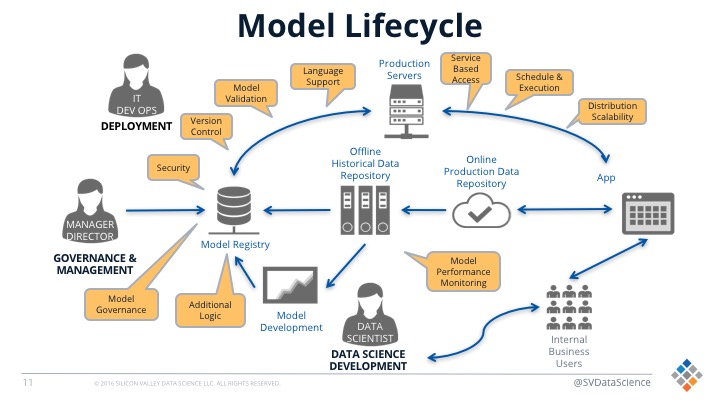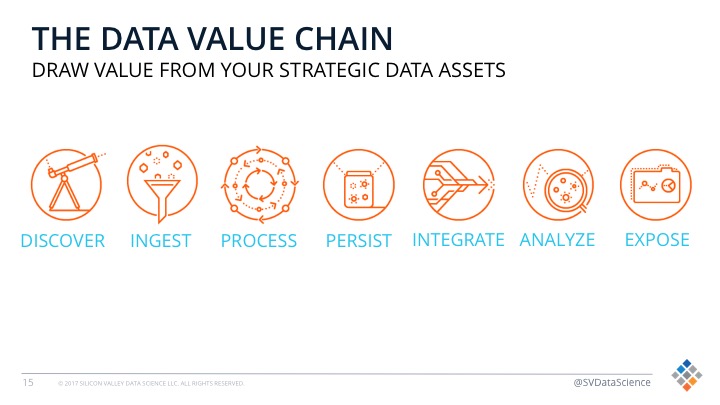Previous Article
Financial Software Company — Machine Learning Assessment

Summary
A financial software company’s technology group wanted to support machine learning capabilities that would enable business objectives across the company.
Silicon Valley Data Science provided a machine learning capabilities assessment, a tool and technology evaluation, and architectural recommendations.
Background and Business Problem
The Chief Data Officer (CDO) at a financial software company recognized their organization needed to evolve beyond current analytical capabilities and infrastructure. Specifically, the company needed to use machine learning to improve their tools, and create an advantage over competitors.
The central technology division supported all flagship products and services across business units. Each business unit had different data technologies, data warehouses, software, tools, and custom solutions. They were at varying stages of supporting advanced analytics development and deployment. Teams across the organization were building things without a lot of knowledge about best practices and without any consistency across the enterprise.
Our client sought an independent and unbiased assessment of their existing capabilities, an evaluation of machine learning tools, and approaches for applying machine learning across the enterprise. They wanted an actionable set of recommendations that considered current and future needs.

Solution
SVDS started by focusing on a set of motivating use cases that represented the future state machine learning capabilities required. High level categories for the use cases included:
- Cohort Analysis
- Data Governance
- Event Stream Processing
- Fraud Detection
- Personalization
- Profile Enrichment
- Propensity
- Risk Management
- Operations: App Performance
- Operations: Compute
- Operations: Engineering Productivity
Each of the use cases were evaluated then broken down into the set of technical work needed to support it from ingesting processing, etc. along the data value chain.

The current state architecture revealed potential constraints and gaps within the entire value chain that were preventing the at-scale machine learning capabilities desired.
We then focused on identifying the key gaps and pain points in the architecture, and any gaps associated with the tools currently being used for model development and deployment. A technical tool evaluation was conducted based off their current and future pain points along with several near-term future actionable paths forward in the form of an executive readout presentation and a long form paper that can be circulated and syndicated widely.
We also identified critical capabilities that already existed within the organization that should continue to be supported and elevated to a central role in the enterprise as foundational components such as their custom methods for deploying models into operational decisions within a single product.
Along with the current architecture assessment identifying existing capabilities as foundational components, further recommendations to address pain points across the organization were made such as to:
- Adopt a strategy to stop proliferation of many independent ingestion points and data stores
- Begin development of a centralized real-time ingestion pipelines and data stores to a single analytic platform which will enable a centralized model development environment serving multiple business units and products
The recommendations would enhance a more holistic customer experience across many of the products across business units while enhancing deployment of insights into operations. This was very important because customer data integration was more of a challenge as groups tried to act holistically across the multiple business units.
Enabling machine learning is not simply a business unit or department problem nor is it strictly about building models; it is something that impacts the entire organization. Our assessment and recommendations gave the company an opportunity to align, understand, and implement capabilities to achieve their goals to provide their customers “right-for-me” experiences, security and anti-fraud, and intelligent systems.





